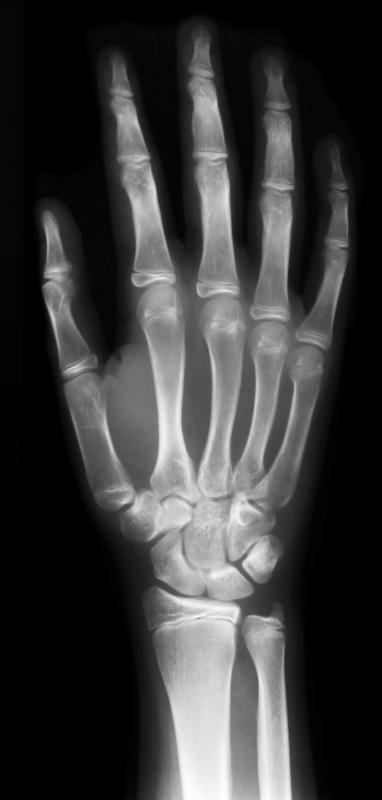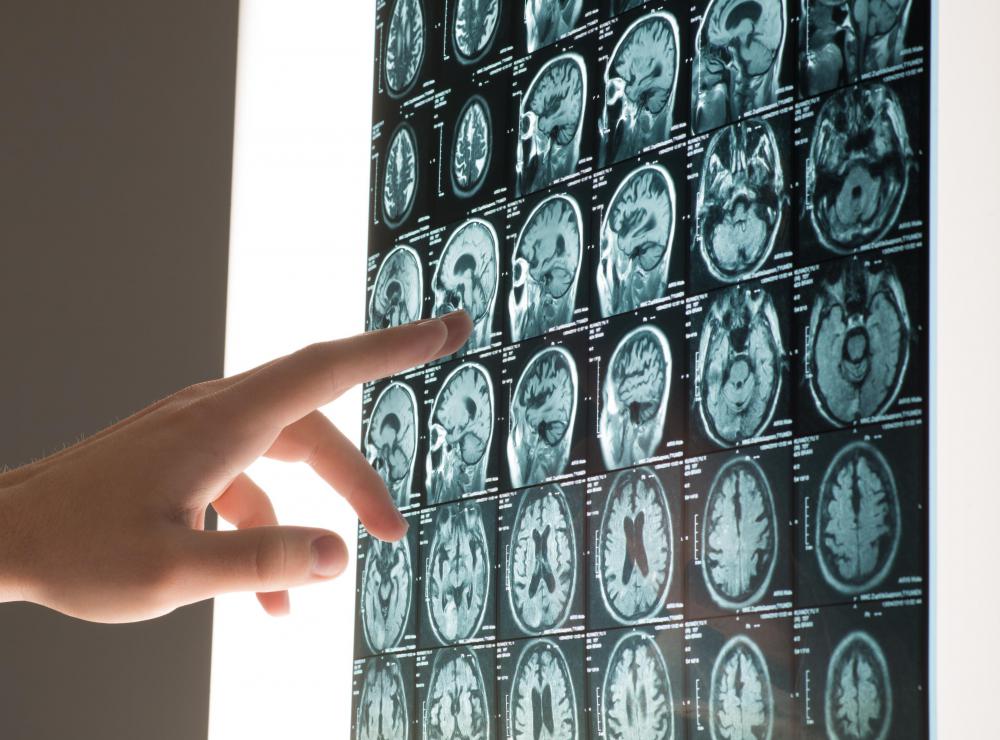At TheHealthBoard, we're committed to delivering accurate, trustworthy information. Our expert-authored content is rigorously fact-checked and sourced from credible authorities. Discover how we uphold the highest standards in providing you with reliable knowledge.
What is Medical Imaging?
Medical imaging is a discipline within the medical field which involves the use of technology to take images of the inside of the human body. These images are used in diagnostics, as teaching tools, and in routine healthcare for a variety of conditions. Medical imaging is sometimes referred to as diagnostic imaging, because it is frequently used to help doctors arrive at a diagnosis, and there are a number of different types of technology used in imaging.
The goal of imaging is to provide a picture of the inside of the body in a way which is as non-invasive as possible. An imaging study can be used to identify unusual things inside the body, such as broken bones, tumors, leaking blood vessels, and so forth. One of the most famous types of diagnostic imaging is the x-ray, which uses radiation to take a static image of a specific area of the body.

In addition to x-rays and related computed tomography (CT) technology, it is also possible to use ultrasound to look inside the body by bouncing sound waves from the body cavity to make a picture, and to utilize magnetic resonance imaging to agitate the cells to get a picture of the body. Medical imaging can also produce dynamic images, such as scans of brain activity or pictures of the heart in motion which can be used to look for diagnostic issues which would not appear in a static image. More invasive techniques involve the insertion of a camera into the body to take video of an area of interest.

Some imaging studies simply require a capture of an image, while others involve the introduction of a contrast material to the body. Contrast materials are swallowed or injected, and they are designed to be highly visible in the picture, allowing a doctor to follow their progress through the body. A barium swallow, for example, may be used in an x-ray of the digestive tract to look for ulcers and perforations, while radioactive contrasts may be injected to look for signs of thyroid cancer.

New technology for medical imaging is being developed all the time, including machines which are less invasive and technology which reduces the need for radioactive materials and other harmful substances in imaging. The newest technology tends to be available at research hospitals and urban medical centers, where a large budget can accommodate the purchase of expensive new equipment, while rural facilities tend to have older, more outdated equipment which is sometimes less effective in diagnosis.

The process involved in acquiring images varies, depending on the technology being used and the area of the body which is being imaged. When a doctor orders a medical imaging study of a patient, he or she may go over the procedure or ask a nurse to provide the patient with information so that he or she knows what to expect.
AS FEATURED ON:
AS FEATURED ON:















Discussion Comments
Good point Heavanet. These types of imaging tests are usually safer, but don't work for all diagnosis needs. Also, sometimes insurance companies don't want to pay for MRIs, which are often more costly than xrays and CT scans.
There are so many different types of medical diagnostic imaging available today, I think sometimes it is overused. Remember, every time you get an xray or a CT scan, you are getting exposed to radiation. Though it would take a lot to cause issues, it is always best to talk about the necessity of imaging with your doctor, especially if you have had a lot of these types of tests in your lifetime.
Post your comments